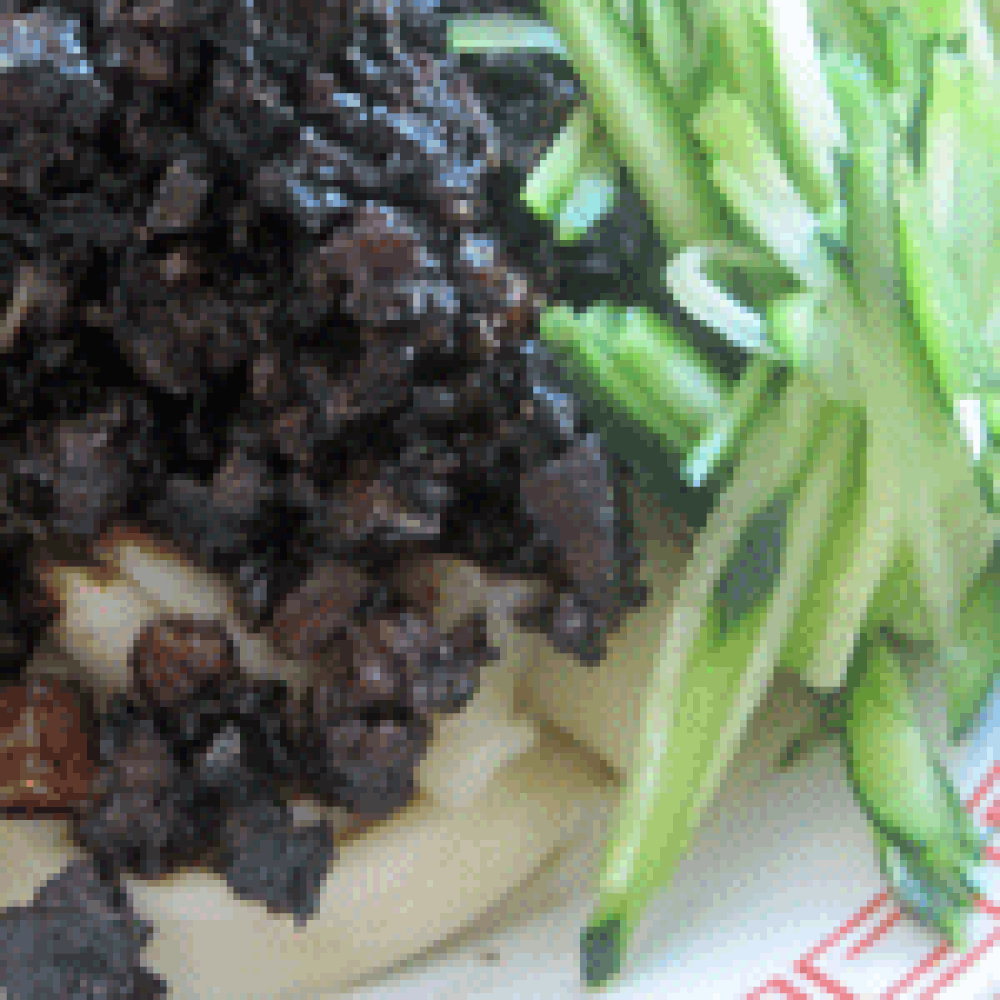Zhajiang noodles with eggplant

Popular throughout most of northeast China, zhajiang noodles are almost like pasta Bolognese: this is basically a rich meat sauce balanced on top of chewy strands of dough. But there the comparison pretty much ends.
<br /> Zhajiang mian means “deep-fried sauce noodles” in Chinese, which has always confused me. Plus, folks generally think of this as from Beijing, and zhajiang noodles is believed by most to be the name this dish was originally christened with. But then I discovered that it came from Manchuria, where it is known by the name zájiàng miàn 雜醬麵, or “mixed sauce noodles.” Zha and za sound very much alike, and perhaps there was some confusion upstream. Who knows what happened... all I know is that I now can sleep well at night.
<br /> We’ve enjoyed endless variations on this dish, but I have to say that the recipe below is the best I have ever tasted. But as with great simple foods elsewhere, perfection demands a couple of very important requirements:
<br /> First, the pasta should be handmade and fresh. Second, don’t drown the noodles with sauce. You want a good balance of sauce to pasta so that your tongue is initially hit with the salty/sweet/meaty taste of the zhajiang, and then this is complemented by the subtly sweet noodles that act sort of like palate cleansers. The cucumber garnish does much of the same thing, but it is raw and slightly tannic, which provides even more contrast. Some people like to sprinkle green onions on top, and I would not be opposed to a few shards per bite, but don’t overdo it.
<br /> Third, add the secret ingredient of this recipe, eggplant, as this ends up as creamy bits of heaven that make the meat even meatier. The idea for this addition came from the wonderful Chinese writer Liang Shih-chiu, who recalled in an essay called “Noodles” (Miàntiáo 麵條) that “our family once was taught by a lofty personage to add cubed eggplant when the sauce was almost done… and the secret lay in doing one’s best to make the sauce on the noodles not too salty.”
<br /> He was right on the money.
<br /> Zhajiang or zajiang, Beijing or the Northeast, this is soul-satisfying stuff.
<br />
<br />[Note: be sure and get sweet wheat paste (甜麵醬), which is a Northern Chinese ingredient. Show these characters to someone at a Chinese market, or ask a Korean market if they have chunjang 춘장. The English part of the label will often call this "sweet bean paste," but no beans were harmed in its creation.]

Comments